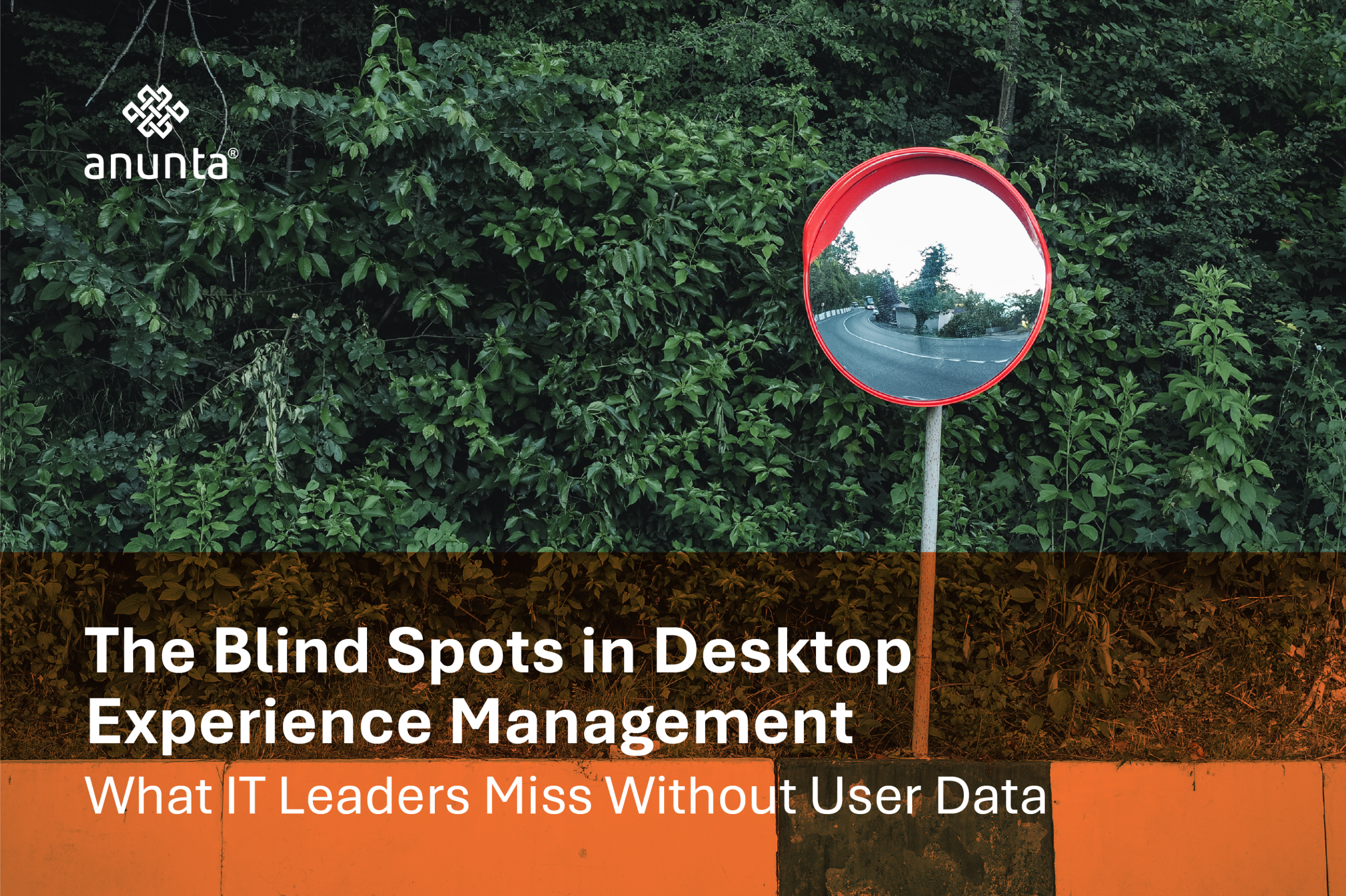
Dashboards don’t tell the whole story.
For IT leaders, desktop experience management often comes down to what you can measure: uptime percentages, ticket volumes, resolution times, patch compliance. These metrics are important — but they’re incomplete. Because what matters most isn’t just whether the system reports “green,” but whether the people behind the screens feel like their tools help them do their jobs.
Our 2025 IT Experience Benchmarks uncovered critical gaps between what leaders believe and what users actually report:
On paper, systems are stable. In reality, users are losing time, patience, and trust.
This blog explores the blind spots in desktop experience management — and how IT leaders can pair hard metrics with human insight to see the full picture.
Ticket closure rates look clean. SLA dashboards suggest responsiveness. But users see something different.
In our benchmarks, more than half of IT leaders said most issues are resolved within 24 hours. Yet nearly half of users disagreed, with many reporting that problems dragged on for days.
The blind spot: Closing a ticket isn’t the same as closing the gap between expectation and reality. From the user’s perspective, resolution isn’t about a timestamp — it’s about whether they can get back to work.
What to do:
According to McKinsey, organizations that supplement operational KPIs with user experience measures see higher adoption of digital initiatives and greater productivity gains (McKinsey).
Ticket volumes can give leaders a false sense of calm. If incidents are steady — or trending down — it’s tempting to assume systems are stable.
But our survey showed that 33% of users sometimes or never report issues. Why? Because they don’t believe it will help, they don’t want to wait in a queue, or they’ve learned to “quiet fix” problems on their own.
The blind spot: “No tickets” doesn’t mean “no problems.” It often means users have stopped trying.
What to do:
As Gartner notes, digital employee experience (DEX) tools are emerging as a critical layer, giving IT leaders proactive visibility into user-level performance rather than waiting for tickets (Gartner).
Leaders and users don’t always see the value of investments the same way.
Our survey revealed:
The blind spot: Strategic investments don’t automatically translate into better day-to-day experiences.
What to do:
IDC forecasts sustained growth in digital infrastructure spend — but also warns that leaders need to demonstrate direct business value from those investments (IDC). For IT, that value must be visible to the user.
Traditional metrics were built for infrastructure health, not user perception. That’s where digital employee experience (DEX) monitoring tools come in.
DEX platforms analyze endpoint performance, application responsiveness, and real user behavior to detect issues early. They don’t replace ITSM or infrastructure dashboards — they complement them, filling the gaps that ticket data misses.
The blind spot: Without proactive monitoring, IT leaders rely on lagging indicators — tickets that may or may not be filed.
What to do:
As Forrester notes, organizations that embrace employee experience monitoring see stronger retention and faster rollout of new technology — because trust grows when IT sees problems before employees do (Forrester).
At the core, desktop experience management is both technical and human. Systems data tells you what should be happening. User data tells you what is happening. Alignment requires both.
The most effective IT organizations connect telemetry with sentiment, closing the loop between monitoring, feedback, and outcomes. They treat IT user satisfaction as a strategic KPI, not an afterthought.
Dashboards matter. But without user input, they’re half the story.
Our 2025 IT Experience Benchmarks reveal where IT leaders see stability, users often see friction. Tickets close on time, but employees feel stranded. Infrastructure spend goes up, but users still ask for faster devices. Blind spots remain — until leaders pair operational metrics with human reality.
Closing the gap isn’t just about preventing issues. It’s about delivering a digital employee experience that feels seamless, trustworthy, and aligned with how people actually work.
That’s the future of desktop experience management — not just systems that run, but systems people believe in.
The 2025 IT End-User Experience Gap Report gives IT leaders the data they need to align systems with users — and close the gaps that cost trust, time, and productivity. Read the full report.
Research Review with Anunta’s CTO | Jan 14 | 12PM PST/3PM EST